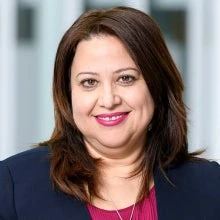Digital opportunities are the fuel of the new economy. They have significant impact on both the economy and society. They contribute to growth, create jobs, are a key enabler of increased productivity, and have significant impact on inclusion and poverty reduction. They also provide the ability to leapfrog and accelerate development in key sectors like health and education.
Why is this important? It is important because “going digital” is not a temporary phenomenon. It is a revolution —what the World Economic Forum calls “ the 4th industrial revolution”. It is happening before our eyes at a dizzying pace, disrupting every aspect of business, government and individuals’ lives. And it is happening in Tanzania.
The fundamental building block that makes “going digital” possible is access to affordable broadband internet , as highlighted by the Sustainable Development Goals. Under the Regional Communication Infrastructure Program (RCIP), we have to date seen significant progress in terms of Tanzania plugging into the global network or the World Wide Web. Some impact:
- Internet bandwidth coming into the country has increased more than 1300 times since 2008;
- Internet has become more affordable with the price of international bandwidth going down from US% 5,000 per mbps/month to US$50; and
- Internet penetration has increased from less than 1% of the population in 2008 to 34% since our last count.
On October 25, I had the opportunity to join the World Bank’s Tanzania ICT team and government counterparts in Dar es Salaam to reflect on the implementation of RCIP, to discuss the digital pilots that have been conducted in Tanzania, and to brainstorm about Tanzania’s not so distant future. It was, to say the least, an inspiring day. Let me share with you just a few examples of what is happening there.
Drones for digital mapping. Unmanned aerial vehicles (UAV) or drones are being used to produce digital maps. The Dar es Salaam Ramani Huria community-based project aims to use those digital maps to assess the flood-prone areas of Dar, take preventative measures to mitigate the impact of flooding before the beginning of the rainy season, and identify appropriate upgrades to informal settlements. Drones are being used for land tenure mapping which is leading to the issuance of digitized land titles for small land holders, a critical proof of asset for any household. Just this past summer, Tanzania completed a digital map of the entire island of Zanzibar , breaking a record for the largest area in the world mapped entirely with drones.
3D printing with recycled plastic. Then we were shown how a pilot project uses recycled plastic bottles for 3D printing! By partnering with local plastic recycling companies, this pilot is leading the way in innovating new approaches not only to manufacture medical tools used in hospitals, but also to reduce the impact of rapid urbanization on the waste management challenge. These pilots are not only testing new technologies but exploring new models of development.
Open data dashboards. We cannot manage what we cannot measure. That’s why the open data principle plays such a critical role in the digital solutions we see today. By improving data visualization and analysis, solutions to age-old problems start to emerge. Building on this premise, Tanzania has established an education dashboard where all kinds of open data are available, including for analyzing the best-performing schools and the teacher-student ratio. Analysis of that data has been extremely useful for policy makers. For example, the dashboard allows you to overlay data on the teacher-student ratio with performance indicators. By doing so, you quickly realize that, surprisingly, there are many high-performing schools that have a poor teacher-student ratio, and vice versa—pointing to the need to further examine what some teachers are doing right and others wrong. The Tanzania Open Data Lab initiative provides capacity building for overall digital literacy and capacity for both the supply side (government) and the demand size (citizens).
RCIP Tanzania has clearly exceeded expectations in terms of internet connectivity. But what is most inspiring is not the cool-looking digital gadgets or the high-speed internet, but the people who are working with this new technology to do something that was not possible yesterday. Collaboration between young technologists and ministries (e.g. Ministry of Lands, Ministry of Education, Science and Technology) are another divide being bridged through these digital pilots. These are homegrown digital solutions applied by Tanzanians. Digital opportunities are for each one of us to seize.
Related videos:
- How Tanzanians are Mapping their Own City to Solve Flooding (World Bank)
- Community Mapping for Urban Flood Risk (Tanzania Open Data Initiative)
- Drones and Land Tenure in Tanzania (Tanzania Open Data Initiative)
- Mapping Zanzibar Using Low-Cost Drones (World Bank)
- Tanzania Open Data Initiative - Overview (Tanzania Open Data Initiative)
- OpenStreetMap Digital Cities in Africa Visualization (Tanzania Open Data Initiative)
- Drones, Open Data, and Transport (Tanzania Open Data Initiative)


Join the Conversation